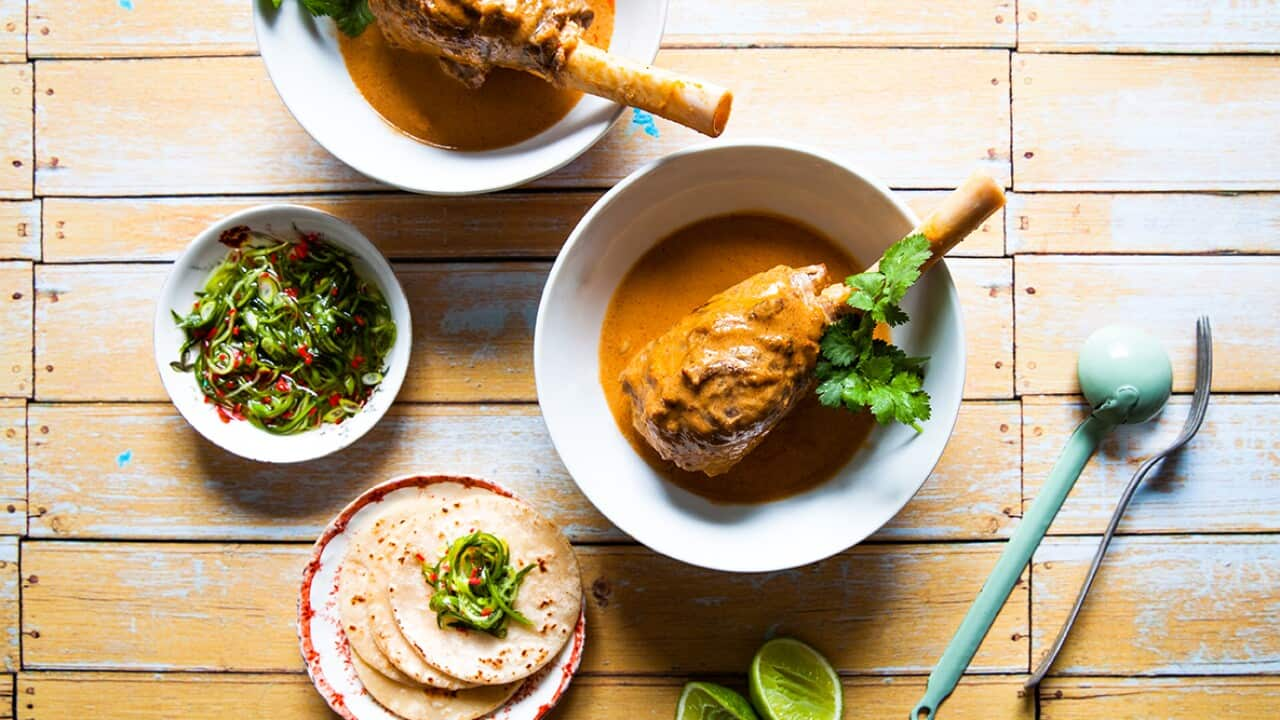While curries are emblematic of Thai cuisine, there’s one in particular that stands out – both for its lesser-known status and the degree of kick it delivers to all those who eat it. It’s called gaeng pa, or jungle curry, and it’s certainly not for the faint of heart.
Gaeng pa is a generic term for curry without coconut milk, but it’s really more of a soup than a curry.
“I remember as kids, gaeng pa was something that was so spicy we could never eat it,” says Palisa Anderson, a second-generation Thai restaurateur known for popular Sydney eateries and . “The more you try it, the more you build up a tolerance, though. Eventually, it becomes really enjoyable.”
Gaeng pa hails from northern Thailand, where the jungle is dense and the summers are stifling. Northerners turn to this spicy – seriously spicy – curry, laden with whatever vegetables are in season, green peppercorns, fresh herbs and chilli to cool down. Unlike its milder cousins (green curry, red curry, massaman and Penang), gaeng pa contains no coconut milk (coconut trees grow in southern Thailand, close to the beach), which means the word ‘curry’ may even be somewhat of a misnomer.
“Gaeng pa is a generic term for a curry without coconut milk, but it’s really more of a soup than a curry,” Anderson explains. “It’s very rustic, made with stock and whatever veggies are in season at the time.”
Traditionally, gaeng pa is made with wild boar or rooster meat but if you’re in, say, Sydney, and access to those kinds of meats is limited, Anderson makes the point that anything goes. Visit a reputable Thai restaurant (, or Anderson’s own Boon Café, for example), and you’ll discover regional equivalents from chefs taking the gaeng pa sentiment and making it their own. Thai-born Spice I Am executive chef Sujet Saenkham creates a curry paste using turmeric for his gaeng som – yellow curry without coconut milk. “You can see how it’s similar, but not exactly the same,” Anderson says. “You’re using minimum protein (usually, the only protein in a curry without coconut milk or meat is shrimp paste) to get maximum flavour.”
READ MORE

Have your spice and eat it too
There is one firm rule when it comes to making gaeng pa, however: “By definition, you’re making something that’s going to completely blow your head off,” she says. She’s talking about the chilli – so don’t hold back.
Here are Anderson’s tips for pulling off the perfect gaeng pa at home.
Do it yourself
If you can, Anderson recommends having a crack and making your own curry paste.
“There really is such a big difference when you make your own,” she says. “When you pound all the ingredients together, the paste is so much more fragrant. If you buy it in bulk, it’s usually blitzed with a food processor – you won’t get the right colour or aroma.”
A standard includes garlic, shallots, chillies (both dried and fresh), lemongrass, galangal, coriander stems, shrimp paste (for an umami kick) and pepper.
Get ready to roast
No protein? No problem. Instead of using coconut milk to carry the flavour through the curry, Anderson suggests using the oil in the aromatics.
“Oil in the chilli is what carries the spice through,” she says. “To get the best oil, you have to roast the chillies over a fire. The same goes for the shallots, onions and all the aromatics that go into the paste.
Time it right
“Do all your chopping and prep first, because once the cooking process gets going it’s really fast – you don’t want it to be a stew,” she says.
So much of what sets gaeng pa apart from other curries is its freshness, its vibrant colours and aromas. Veggies are usually just cooked through and should retain a bit of crunch. Above all else, it should be served piping hot.
“Veggies go into the pot in order of toughness, so start with root vegetables and finish with herbs as soon as you turn the gas off. Cook the curry in a timely fashion, and serve straight away. It should be really hot – hot enough to burn your head and eyeballs!
A bone to pick
If you’re making gaeng pa with meat or fish, Anderson suggests cooking it on the bone for maximum tenderness. “Cook it so it’s nice and tender with the curry paste, then add veggies,” she says. “If you’ve got fish, you’ll be spitting bones out as you’re eating, but that’s all part of it. No filleting allowed!”








